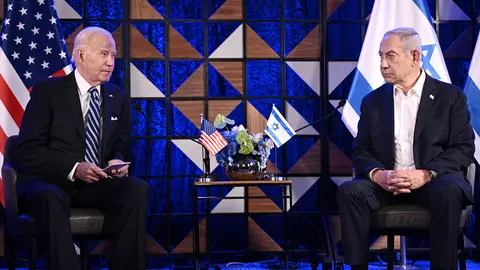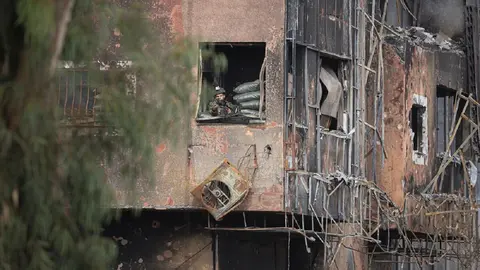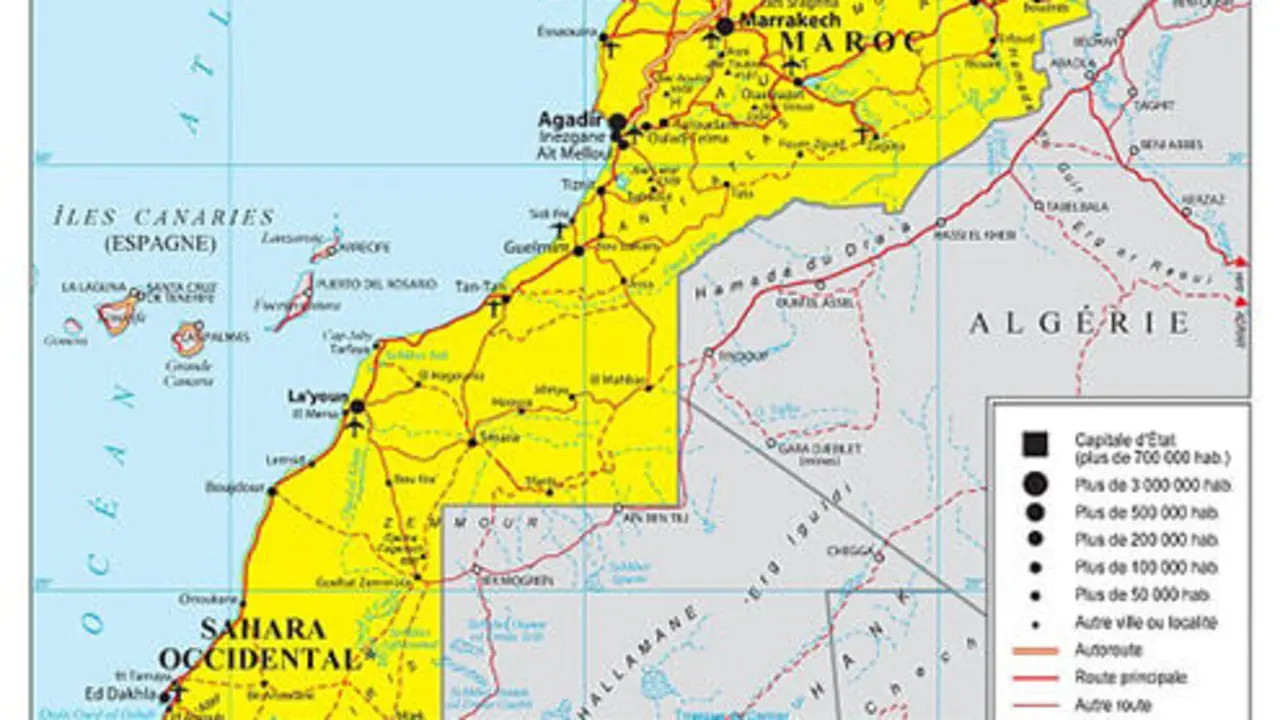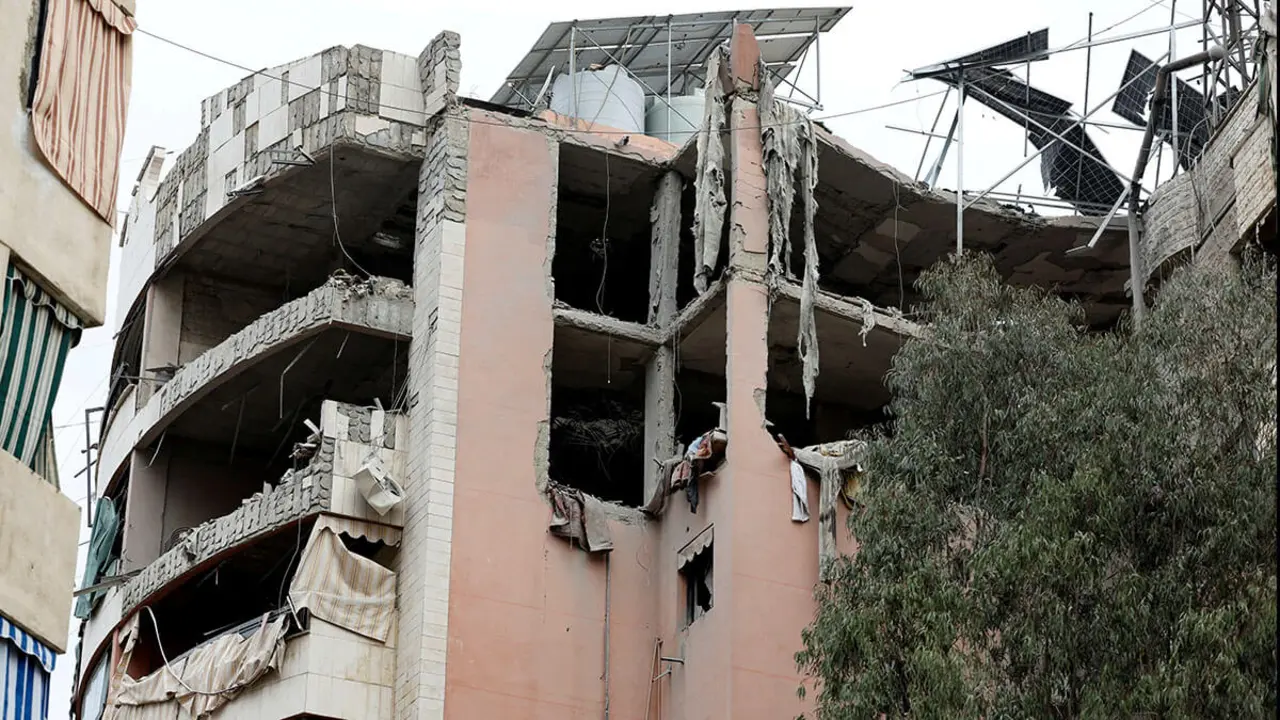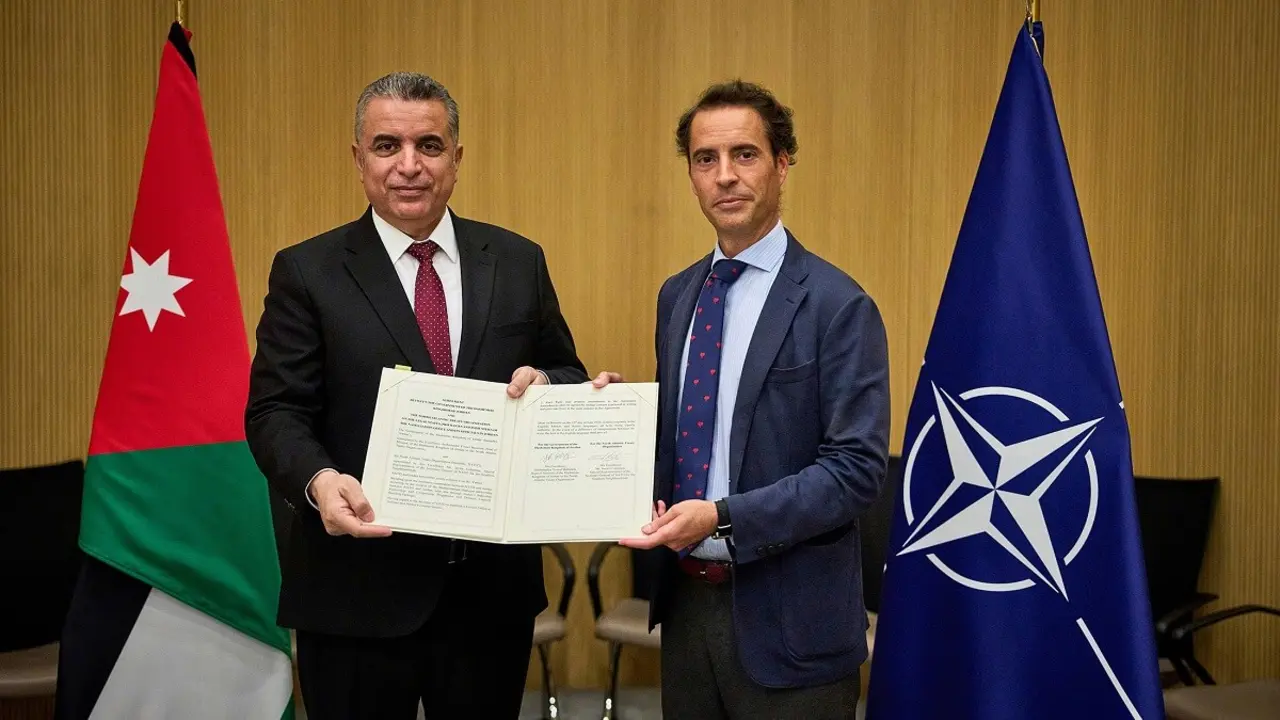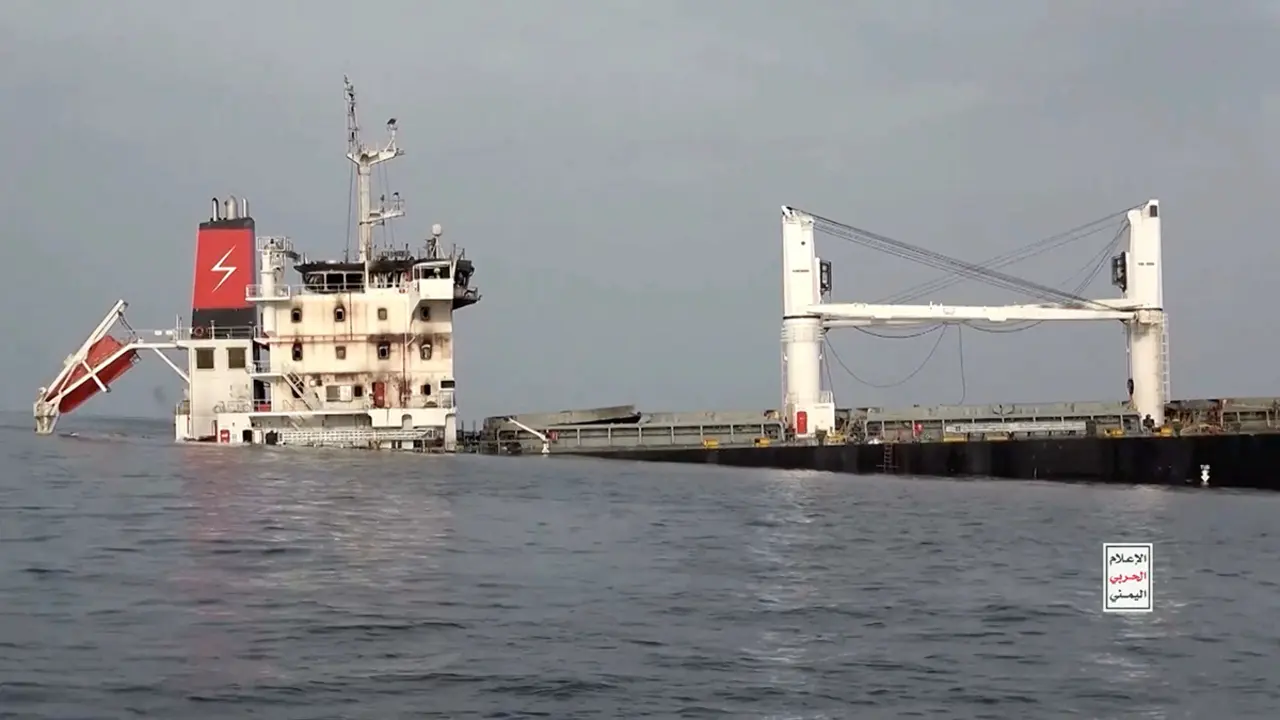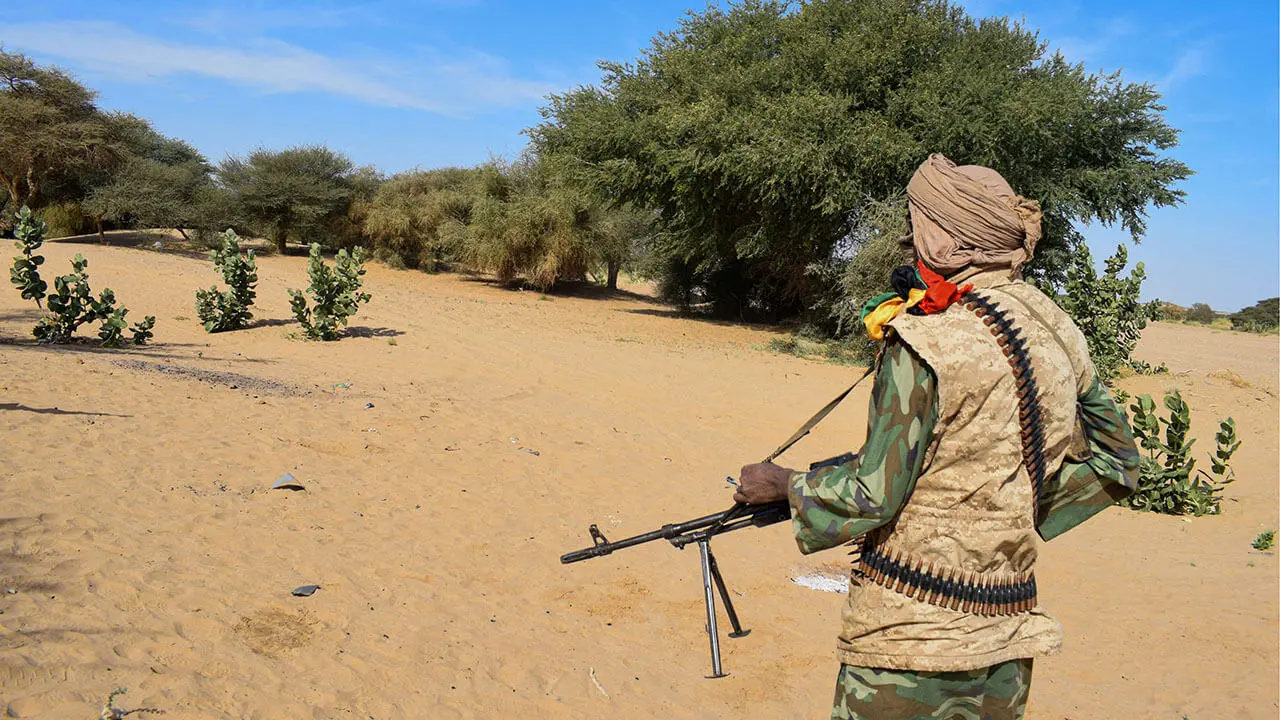Israeli army finds largest Hamas tunnel in Gaza so far

The Israel Defence Forces (IDF) have discovered this weekend "the largest Hamas tunnel" of 4 kilometres in length. In a statement, the Israeli army explained that the underground infrastructure is "wide enough for a large vehicle to pass through, reaches up to 50 metres underground and is equipped with electricity, ventilation and communication systems".
However, this tunnel does not cross into Israel, but ends 400 metres before the now closed Erez crossing on the northern border between Israel and Gaza. This crossing was stormed by Hamas during the 7 October attacks, although it was previously crossed daily by 8,500 Gazans to enter Israel to work.
EXPOSED: The biggest Hamas terrorist tunnel discovered.
— Israel Defense Forces (@IDF) December 17, 2023
This massive tunnel system branches out and spans well over four kilometers (2.5 miles). Its entrance is located only 400 meters (1,310 feet) from the Erez Crossing—used by Gazans on a daily basis to enter Israel for work… pic.twitter.com/RcjK5LbvGL
The IDF has stressed that this tunnel is part of the terrorist group's "strategic infrastructure" and will be destroyed. It is believed to have been used as a launching point for attacks, as well as for "Hamas troop movements".
In addition to this long, deep tunnel, the IDF claims to have discovered "hundreds" of similar infrastructures throughout the Gaza Strip, where it continues to operate to further locate and destroy the tunnel system, a project led, according to Israel, by Muhammad Sinwar, brother of Hamas leader Yahya Sinwar, for whom a reward of $400,000 is being offered.
🔴REVELADO: Enorme red de túneles del #Hamas de más de 4 Km.
— Israel en Español (@IsraelinSpanish) December 17, 2023
Israel reveló una red de túneles de ataque del Hamas que fue construida a unos 400 metros del cruce humanitario de Erez, un cruce que era utilizado por miles de palestinos que entraban día a día a trabajar y recibir… pic.twitter.com/S8NeIGWj4k
To end this infrastructure, the IDF has begun flooding some of Hamas's tunnels with seawater. As The Wall Street Journal reported last week, the Israeli army installed five large water pumps near Gaza City capable of flooding the tunnels in a matter of weeks by pumping thousands of cubic metres of water per hour.
In an attempt to ambush our troops, Hamas terrorists connected dolls to speakers playing crying sounds and set them up in an area rigged with explosives.
— Israel Defense Forces (@IDF) December 15, 2023
The dolls and children's backpacks were intentionally placed near a tunnel shaft connecting to a large tunnel network that… pic.twitter.com/sXfjqXGJL9
The Islamist organisation is estimated to have built 500 kilometres of tunnels under the Gaza Strip, including hospitals, schools and residential areas. These tunnels have been used for years for smuggling from Egypt, for launching attacks against Israel and for storing ammunition and weaponry. Some have also been used as command centres - such as the barracks under Al-Shifa hospital - and, after the 7 October attack, many of the hostages were held there.
According to IDF figures, each tunnel cost $3 million, equivalent to 350 truckloads of building materials that could have been used to build 86 homes, 7 mosques, 6 schools and up to 19 health centres in Gaza.
WATCH: Hamas hid weapons in incubators in the NICU, incubators that were supposed to be used to treat premature babies.
— COGAT (@cogatonline) December 16, 2023
These weapons were found following the confession of hospital workers.
The Kamal Adwan hospital was used by Hamas as a command center. pic.twitter.com/wcDhAAGi8e
Black weekend in Israel
The discovery of the longest tunnel so far coincides with one of the toughest times for Israel since it launched its ground operation in Gaza. This weekend, the IDF announced that Israeli troops mistakenly killed three hostages in the Shejaiya neighbourhood of Gaza City.
Otra tragedia.Este viernes el portavoz militar revela que 3 de los secuestrados que habían logrado huir, fueron identificados por error por soldados como terroristas, y fueron baleados de muerte.Indescriptible: Alon Shamriz, Yotam Haim y Samer Talalka. Benditas sean sus memorias. pic.twitter.com/wxpsTPhZSZ
— Jana Beris (@JanaBeris1) December 15, 2023
After 70 days held hostage by Hamas, Yotam Haim, Samar Talalka and Alon Shamriz managed to escape, but were killed by Israeli soldiers after they were mistakenly identified as a threat, despite carrying white flags and even speaking Hebrew. Subsequently, the IDF also released photographs showing signs on a nearby building reading "SOS" and, in Hebrew, "help, 3 hostages". The posters were written on cloth with leftover food.
💥The Israeli army tonight released images of signs made by the hostages who were later killed by Israeli forces, apparently with food:
— Noga Tarnopolsky נגה טרנופולסקי نوغا ترنوبولسكي💙 (@NTarnopolsky) December 17, 2023
"SOS"
"HELP 3 HOSTAGES." pic.twitter.com/dHXUUlKFg8
In addition to this tragic incident, the lifeless bodies of hostages Inbar Haiman and Aden Zakaria, both aged 27, have been found in recent days. Both Haiman and Zakaria were not released during the truce at the end of November despite meeting the requirements to enter into the agreement.
🔴 Israeli hostage Inbar Haiman, 27, was murdered in Gaza captivity, her family is told pic.twitter.com/nBPlEyeCGr
— i24NEWS English (@i24NEWS_EN) December 16, 2023
It is believed that 128 hostages remain in Gaza - not all of them alive - after 105 civilians were released in the ceasefire between Israel and Hamas. Prior to the truce four hostages were released and one was rescued by troops.
Eden Zakaria hoy debería estar celebrando su cumpleaños 28, con toda una vida por delante.
— Israel en Español (@IsraelinSpanish) December 15, 2023
En lugar de eso, hoy fue enterrada.
Eden fue secuestrada el 7/10 por los terroristas del #Hamas y murió en cautiverio. Hace unos días recuperamos su cuerpo.
Su mamá hoy tendría que… pic.twitter.com/XSDAOS3zrn
In this regard, Israel and Hamas would again be open to a new truce that would include the release of the hostages, Reuters reports. Egyptian security sources quoted by the news agency said that Hamas insists on deciding unilaterally which hostages will be released, and demands that Israeli troops withdraw. According to the sources, Israel rejected the latter term, demanding also to check the list of hostages before the ceasefire is determined.
To address this issue, CIA Director William J. Burns is scheduled to meet in Poland with Mossad chief David Barnea and Qatari Prime Minister Mohammed bin Abdulrahman bin Jassim Al Thani, Walla News reported citing a US official.
In addition to the delicate situation in Gaza, tension continues to mount in the West Bank after an Israeli soldier was stabbed at a petrol station near the Rantis checkpoint and a young woman was wounded following a shooting at her vehicle, which also contained a man and a baby. Clashes also continue in the north with the Lebanese Shi'ite group Hezbollah, which continues to launch attacks on Israeli territory.
#Photo: Israel intercepted a drone from Lebanon (Hezbollah) pic.twitter.com/8ETBnKyCcC
— Open Source Intel (@Osint613) December 18, 2023
Computer warfare
Separately, Israel's National Cyber Directorate announced this morning that it thwarted a cyber attack on an Israeli medical centre in the north of the country. The hackers, linked to Iran and Hezbollah, attempted to disrupt the hospital's operations.
Meanwhile, the Iranian authorities have reported that almost 70% of the country's petrol stations were out of service after a possible cyber-attack caused "software problems". An Israeli-linked hacker group dubbed "Gonjeshke Darande" or "predatory sparrow" claimed responsibility for the cyber-attack.

